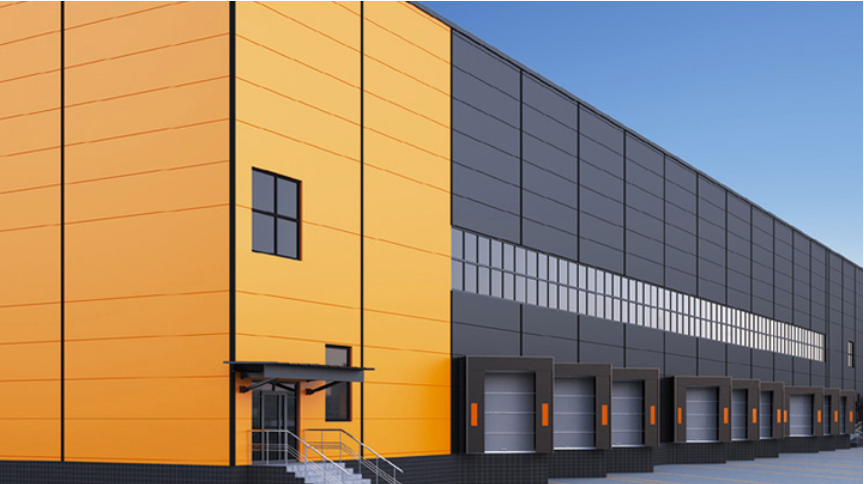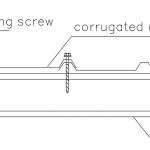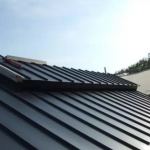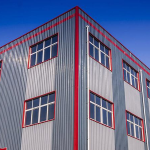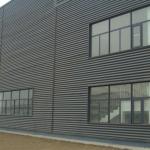Mobile: 8613421351153
Difference between PU and PIR sandwich panels
In industrial buildings, there is an increasing demand for sandwich panels. The commonly used ones are polyurethane sandwich panels (PU) and polyisocyanurate sandwich panels (PIR). So what is the difference between them?
Differences in composition
Both PU and PIR sandwich panels are made up of a combination of a polyol and an isocyanate. However, the ratio of these components used in each panel differs. PU sandwich panels use a 2:1 ratio of polyol to isocyanate, while PIR panels use a 2.9:1 ratio. This slight difference in composition gives PIR panels superior thermal insulation properties.
Differences in fire performance
Fire resistance is another critical aspect where PU and PIR panels differ significantly. PU panels are made up of a thermoset plastic material, which is highly flammable, while PIR panels are composed of a thermosetting resin and a blowing agent, making them less susceptible to fire.
While PU sandwich panels can be upgraded to class B2 by adding flame retardants, PIR sandwich panels can be upgraded to class B1 by adjusting the concentration of the polyisocyanurate ring and other formulation techniques, which seems to make PIR panels even more fire resistant. Therefore, PIR panels are a safer choice for buildings that need to comply with strict fire regulations, such as high-rise buildings, hospitals and schools.
Differences in Thermal insulation
One of the most significant differences between PU and PIR panels is their thermal insulation performance. The thermal conductivity of PU sandwich panels is 0.022W/mK-0.026W/mK at 25°, while the thermal conductivity of PIR sandwich panels can be as low as 0.019W/mK. The temperature resistance range of the two materials is also different. The temperature resistance range of PUR sandwich panel is -185℃~+110℃, and the temperature resistance range of PIR can reach about -196℃~+205℃. This means that PIR panels provide better insulation and thermal conductivity compared to PU panels. PIR panels are, therefore, suitable for applications that require high levels of insulation, such as cold storages, refrigerated warehouses, and temperature-controlled facilities.
Differences in Moisture Resistance
Another significant difference between PU and PIR panels is their resistance to moisture. The water absorption rates of the two sandwich panels are different. The water absorption rate of PUR sandwich panels is 2.5%~3%, and the water absorption rate of PIR sandwich panels can reach 0.9%. PU panels have a low tolerance for moisture, and if water infiltrates the panel’s core, it can lead to damage and a decrease in thermal insulation performance. On the other hand, PIR panels have a closed-cell structure, making them more resistant to moisture. This makes PIR panels an ideal option for areas with high humidity levels, such as indoor swimming pools and food processing facilities.
Differences in Structural properties
Both PU and PIR panels have excellent structural properties, making them suitable for building walls, roofs, and floors. The compressive strength of PU sandwich panels is 150-200 kPa, and PIR sandwich panels have 250-300 kPa. However, PIR panels have a higher compressive strength compared to PU panels, meaning that they can withstand higher loads and pressures without being deformed.
This higher compressive strength of PIR panels makes them a suitable choice for buildings that require structural support, such as cold storage facilities and industrial buildings. PIR panels can also be used as roof panels in areas with heavy snow loads, as they can withstand the weight without deforming.
In summary, there are several differences between PU and PIR sandwich panels. While both offer excellent thermal insulation and are lightweight, they differ in their composition, fire performance, compressive strength, moisture resistance. Therefore, it is essential to consider the specific requirements of a project before choosing between PU and PIR sandwich panels.
